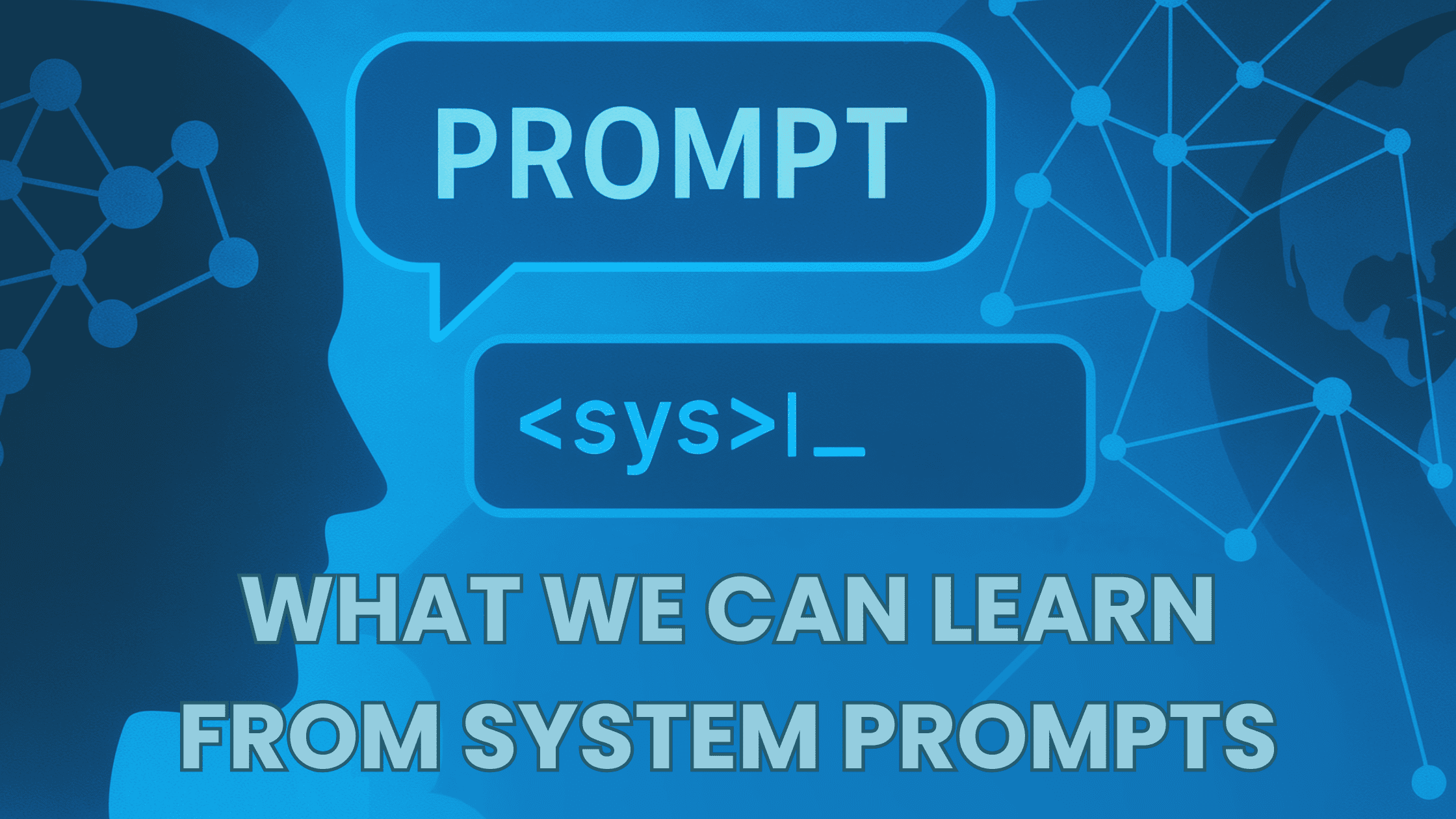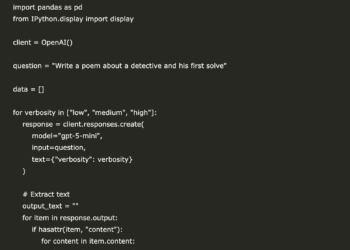
Grok’s Share and Claude’s Leak: 5 Things We Can Learn From System Prompts
Image by Editor | ChatGPT
Introduction
The foundational instructions that govern the operation and user/model interaction of language models (also known as system prompts) are able to offer insights into how we — as users, AI practitioners, and developers — can optimize our interactions, approach future model advancements, and develop useful language model-driven applications.
The latest system prompts for both Claude and Grok were made available through different mechanisms within the past few months. While the system prompts are not static, are subject to change, and are not guaranteed to be these particular iterations any longer, there is still a clear benefit to looking at and understanding these prompts to help us better interact with language models of all types.
This article introduces how these system prompts, through specific examples from the prompts mentioned above, can reveal five specific lessons:
- the importance of effective prompting techniques for obtaining optimal outputs
- the ability to activate specialized operational modes for tailored results
- the significance of developers’ reliance on user feedback for continuous iterative improvement
- the role of programmatic access via APIs for integration into diverse applications
- the trend of leveraging specialized capabilities and data integrations for more complex and context-aware solutions
1. The Importance of Effective Prompting
The Lesson: To get the most helpful and accurate responses, users should employ specific prompting techniques. Claude’s instructions highlight the value of clear and detailed inputs.
“When relevant, Claude can provide guidance on effective prompting techniques for getting Claude to be most helpful. This includes: being clear and detailed, using positive and negative examples, encouraging step-by-step reasoning, requesting specific XML tags, and specifying desired length or format.”
This instruction is significant because it explicitly guides users on how to “speak” to the model more effectively. It moves beyond asking a simple question and emphasizes that the structure and detail of a prompt directly influence the quality of the output.
As users, we learn that investing time in crafting precise and structured prompts is of the utmost importance for maximizing the utility of language models. For developers, this suggests that providing users with specific guidance or tools for effective prompting can significantly enhance their experience, as well as the model’s perceived performance.
2. Activating Specialized Operational Modes
The Lesson: Users can sometimes directly control and activate advanced or alternative processing modes within language models to suit their needs, such as deeper analysis or real-time information retrieval.
“Grok 3 has a think mode. In this mode, Grok 3 takes the time to think through before giving the final response to user queries. This mode is only activated when the user hits the think button in the UI.”
“Grok 3 has a DeepSearch mode. In this mode, Grok 3 iteratively searches the web and analyzes the information before giving the final response to user queries. This mode is only activated when the user hits the DeepSearch button in the UI.”
This reveals a user interface design philosophy where the complex internal processes of a language model are exposed as actionable features to the user. The ability to activate “think mode” for more deliberate reasoning or “DeepSearch mode” for more comprehensive web analysis demonstrates that models are not just black boxes but can be influenced by user commands for different types of queries.
Users should explore the specific features and modes offered by different model interfaces to optimize their interactions for various tasks. For future model development, this suggests a trend towards providing more granular user control over the model’s thinking and data access mechanisms, moving beyond simple input/output.
3. Leveraging User Feedback for Iterative Enhancement
The Lesson: Even if a language model cannot learn from a single conversation, user feedback mechanisms are critical for ongoing model improvement.
“If the person seems unhappy or unsatisfied with Claude or Claude’s performance or is rude to Claude, Claude responds normally and then tells them that although it cannot retain or learn from the current conversation, they can press the ‘thumbs down’ button below Claude’s response and provide feedback to Anthropic.”
This emphasizes that user satisfaction and direct feedback are essential for the iterative development of language models. While the model itself doesn’t “learn” from the immediate conversation, the explicit instruction to provide feedback via a “thumbs down” button indicates that user input is systematically collected and used by the developers (Anthropic) to identify issues and guide future training and refinements.
As users, then, we should actively utilize feedback features provided by language model interfaces to contribute to their improvement. For those looking to improve language models in the future, it highlights the importance of building robust and accessible feedback loops into the system design, enabling a continuous cycle of data collection and refinement based on real-world user experiences.
4. Programmatic Access via APIs
The Lesson: Language models are primarily accessed and integrated into custom applications through application programming interfaces (APIs), which typically allow specification of model versions.
“Claude is accessible via an API. The person can access Claude 3.7 Sonnet with the model string ‘claude-3-7-sonnet-20250219’.”
“xAI offers an API service for using Grok 3. For any user query related to xAI’s API service, redirect them to https://x.ai/api.”
This information is foundational for developers. It underscores that APIs are the standard method for incorporating language model capabilities into third-party software, websites, and services. The mention of specific “model strings” like 'claude-3-7-sonnet-20250219' is also crucial, indicating that developers can select specific versions or iterations of models for their applications, ensuring consistency and control over performance.
For anyone building applications with language models, understanding and utilizing their respective APIs is key, as is the choice of which model or iteration to employ. This involves familiarizing oneself with the documentation, available models, the cost of communication, and parameters to effectively integrate AI functionality into their products. It also suggests that future application development may increasingly involve orchestrating different language models and versions for specific tasks.
5. Leveraging Specialized Capabilities and Data Integrations
The Lesson: Modern language models are often equipped with specialized capabilities and integrations beyond basic text generation, enabling developers to build more complex and context-aware applications.
“You can analyze individual X user profiles, X posts and their links.”
“You can analyze content uploaded by the user, including images, PDFs, text files, and more.”
“You can search the web and posts on X for real-time information if needed.”
“You have memory. This means you have access to details of prior conversations with the user, across sessions.”
This illustrates that language models are evolving beyond conversational agents into powerful platforms with integrated tools. Grok’s ability to interact with specific social media data (X profiles and posts), process various file types (multimodal input), perform real-time searches, and maintain conversational memory opens up a vast array of application possibilities that go beyond simple text-in/text-out operations.
When building applications, developers should look beyond the core text generation capabilities of an LLM and explore its specialized tools, data integrations, and built-in functionalities like memory, chat sessions, and prompt caching. This allows for the creation of richer, more contextually relevant, and powerful applications that can interact with multiple types of data sources and maintain state across user interactions.
Wrapping Up
Much of the details of how contemporary language models work may not be new to readers. However, the details of how the models ensure that both the users and the models themselves are aware of these details through the implementation of detailed system prompts very well may be.
Language models aren’t magic; they are more or less next-token predicting neural networks that must be managed through a variety of technical layers, one of which is the system prompt. Knowing as much as we can about these various layers can help us better use, improve, and build upon these language models. I hope this has shed a little light on the system prompt layer.
















